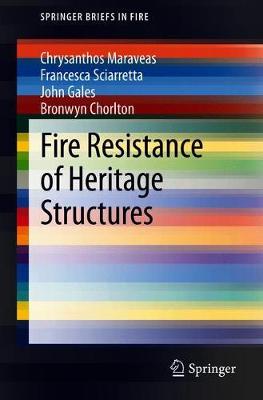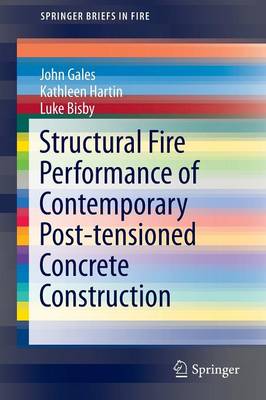SpringerBriefs in Fire
2 total works
Fire Resistance of Heritage Structures
by Chrysanthos Maraveas, Francesca Sciarretta, John Gales, and Bronwyn Chorlton
Published 26 June 2020
For preservation and adaptation of heritage or historic buildings, an understanding of their constructional material properties at elevated temperatures and structural elements fire behavior is required so that they can be demonstrated to possess sufficient fire resistance in their new and current uses. Fire Resistance of Heritage Structures presents systematic information regarding the main materials used in heritage structures (masonry, metals, and timber). Material properties at elevated temperatures, response of structural elements and systems in fire and protection guidelines are presented, including information from historical fire tests.
The book provides, in a systematic way, useful information and methodologies required to assess the fire resistance of historical structures. It covers a wide range of historical materials, including cast iron, wrought iron, old steel, masonry (clay masonry units, mortars and types of construction stone) and old timber. Information regarding the post-fire assessment is also provided. This Brief is perfect for practicing fire and structural engineers dealing with conservation projects, as well as students and researchers studying historical structures and their conservation.
The book provides, in a systematic way, useful information and methodologies required to assess the fire resistance of historical structures. It covers a wide range of historical materials, including cast iron, wrought iron, old steel, masonry (clay masonry units, mortars and types of construction stone) and old timber. Information regarding the post-fire assessment is also provided. This Brief is perfect for practicing fire and structural engineers dealing with conservation projects, as well as students and researchers studying historical structures and their conservation.
Structural Fire Performance of Contemporary Post-tensioned Concrete Construction
by John Gales, Kathleen Hartin, and Luke Bisby
Published 20 October 2015
This SpringerBrief equips readers to develop defensible fire safety designs for a range of concrete structures. It identifies current gaps in the research and provides a more complete understanding of the structural and thermal response of contemporary Post-tensioned (PT) concrete structures to fire.
The brief includes chapters on contemporary construction using PT concrete, previous structural fire test research programs, recent research programs, real fire case studies, and current research needs. It explores the progression of PT concrete structures, looking at the sustainability and aesthetic benefits, the ongoing development of stronger concretes, and best practice guidance for improving safety in the event of fire.
Designed for practitioners and researchers in fire engineering, this brief is a valuable tool for those studying the impact of fire on concrete, fire safety designs, and building safety optimization. Advanced-level students in civil engineering will also find the content useful.
The brief includes chapters on contemporary construction using PT concrete, previous structural fire test research programs, recent research programs, real fire case studies, and current research needs. It explores the progression of PT concrete structures, looking at the sustainability and aesthetic benefits, the ongoing development of stronger concretes, and best practice guidance for improving safety in the event of fire.
Designed for practitioners and researchers in fire engineering, this brief is a valuable tool for those studying the impact of fire on concrete, fire safety designs, and building safety optimization. Advanced-level students in civil engineering will also find the content useful.

